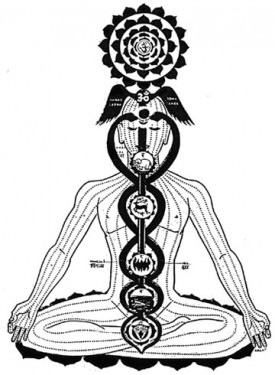In yoga the breath can channel energy through the body. It’s can be a challenge to let go of thoughts and focus on the breath, I suddenly realized that Kundalini (the flow of energy itself) was a flow in itself. It’s possible to follow the flow, and feel overall more calm.
My firsthand taste of this flow made me realize that for hatha yogis who have experienced energy moving through the body, Kundalini meditation may be the most accessible form of meditation there is.
The word kundalini refers to the energy that resides at the base of the spine and that, once awakened, rises up the spine. By focusing on the feeling that the breath creates on the inhalation and exhalation, you naturally develop a greater awareness of the flow of energy within and between your body’s energy centers. As your sensitivity to that inner flow expands, an understanding may occur.
Kundalini is carried from the base of the spine throughout the body by way of three primary nadis, or channels. These are the shushumna, which runs alongside and parallel to the spinal cord, and the ida and the pingala, which weave back and forth along the spine.
The points where these channels intersect make up the seven major chakras: The first is muladhara, the root chakra located at the base of the spine. Svadisthana, the second chakra, representing sex, is at the genitals. Manipura, the third chakra, is located two fingers below the navel. At the heart center, you’ll find the fourth chakra, anahata, and at the throat you’ll find the fifth, called visuddha. Between the eyes is the sixth chakra, known as ajna, or third eye. And finally, the sahasrara, or crown chakra, is located at the top of the head. Once you get a sense of the seven points, then you can start to connect them and feel a more continuous flow of energy moving through you.









